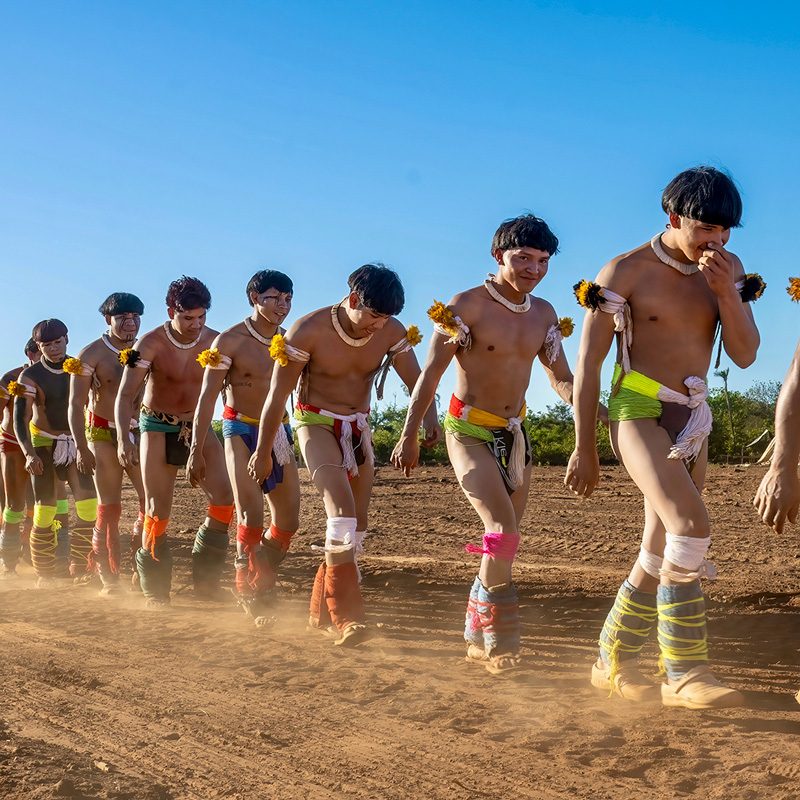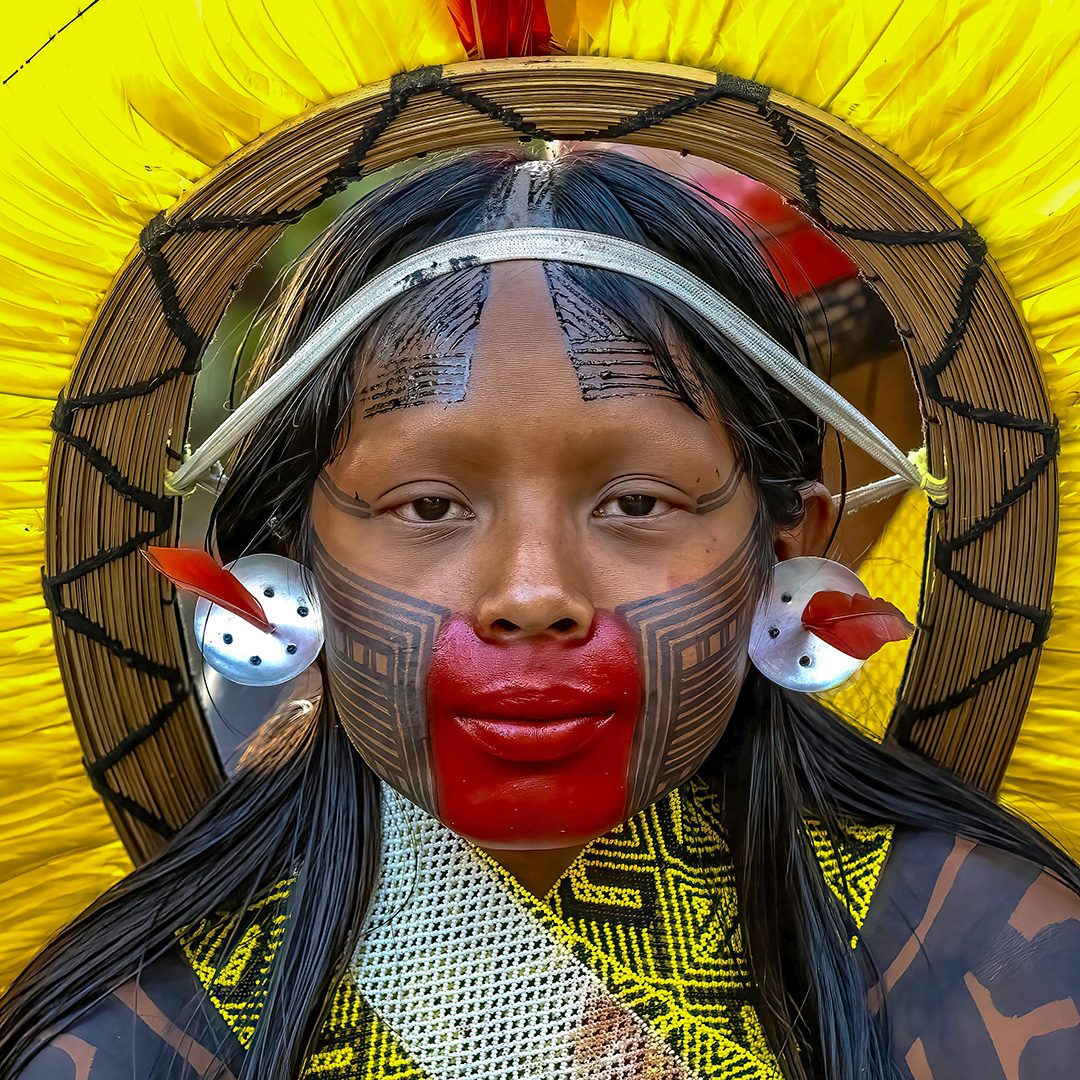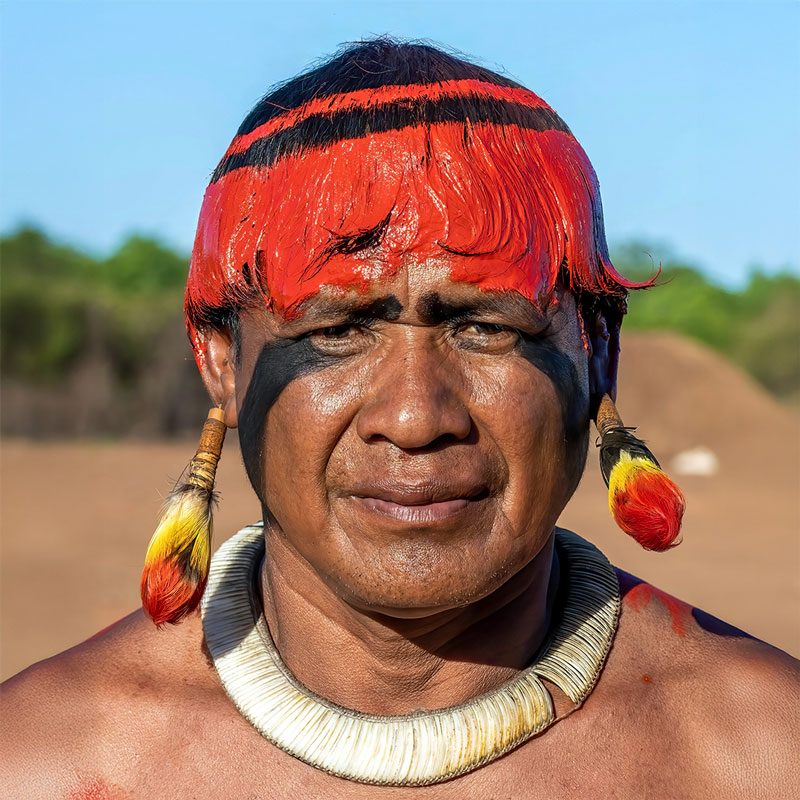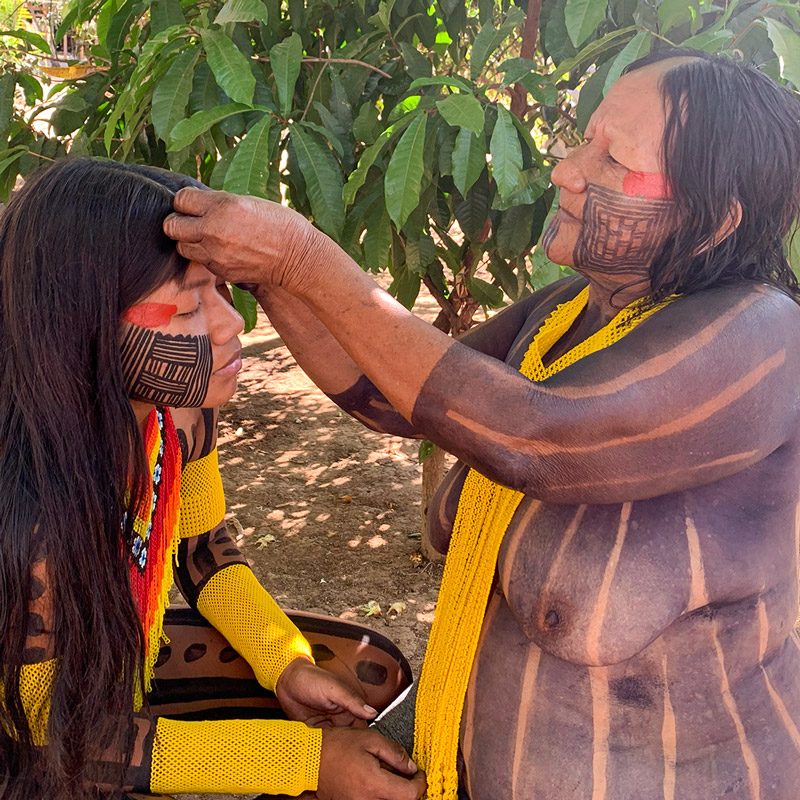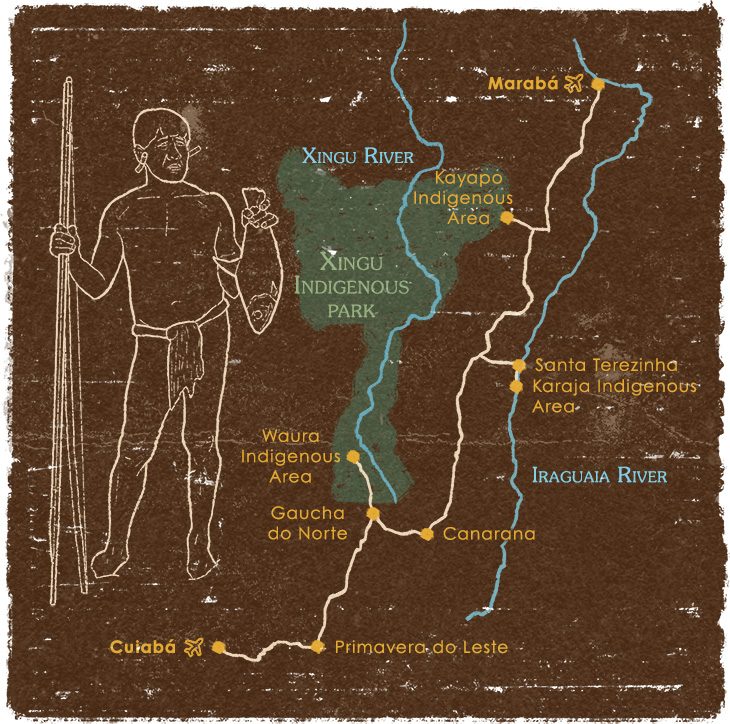Discover the highlights of this tribal trip to Brazil
Meeting with the Kayapo
This tribal trip to Brazil begins in the territory of the Kayapo, also known as Mebengokré. This warrior people were contacted just a few decades ago and still preserve much of their traditional way of life. During our stay, we will live with the community, participating in dance ceremonies, naming rites, and body painting sessions. Also, we will accompany the women as they gather wild fruits and medicinal plants, and learn ancient fishing techniques.
The Kayapo worldview places body painting as an element that transforms human beings, uniting myth, nature, and society. This contact will be one of the most intense moments of the tribal trip to Brazil.
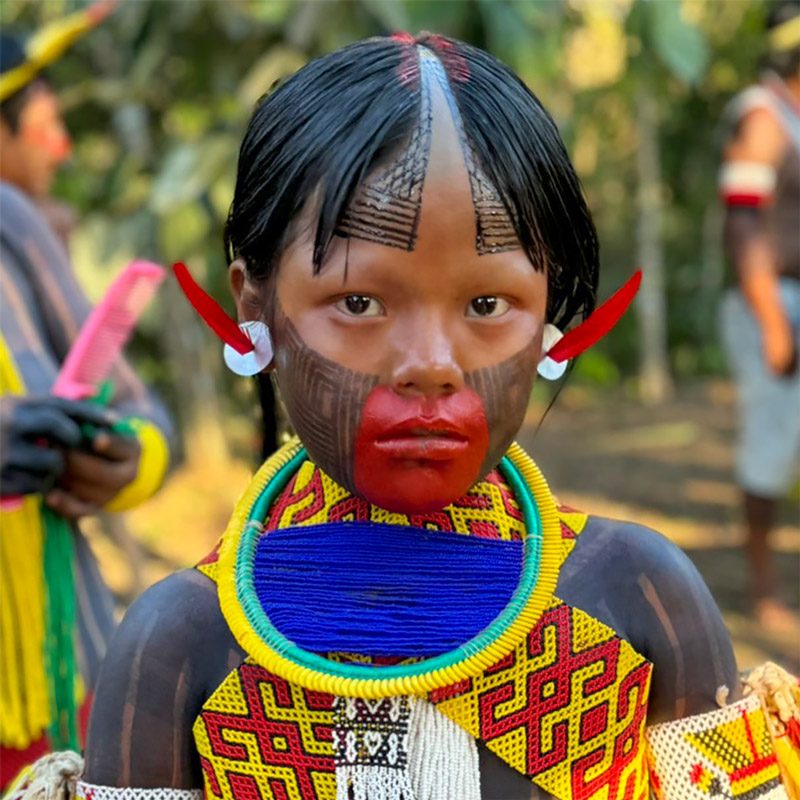
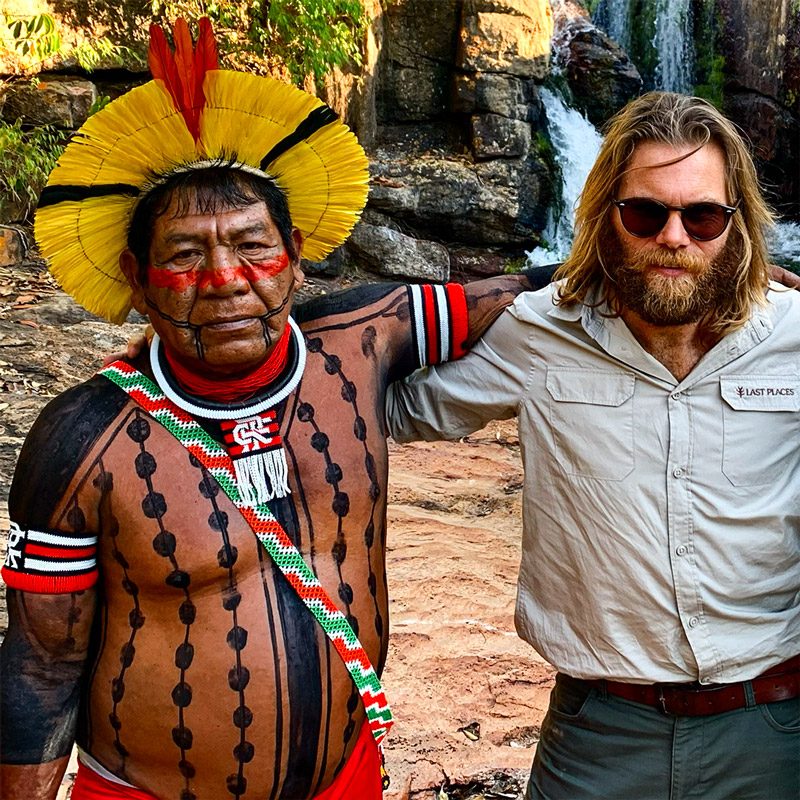
The culture of the Karajas
After the experience with the Kayapo, we will navigate the Araguaia River to meet the Karaja. This Amazonian tribe maintains its initiation ceremonies and combines ancestral animistic beliefs with Catholic elements introduced by the Jesuits. During the visit, we will observe traditional facial tattoos, attend a community fishing trip, and speak with the village leader and his page. Life by the river and the rites of passage of young people are central elements of their identity, aspects we will experience firsthand on this tribal trip to Brazil.
Coexistence with the Waura
The tour will take us to the Xingu Indigenous Park, home to the Waura, one of the smallest Amazonian communities, numbering just 120 individuals. Our cultural immersion will include body painting ceremonies, ritual music played with long flutes, and traditional wrestling matches known as una una. One of the highlights will be participation in the Piquí Fruit Festival, a celebration in which men paint themselves in bright red colours and where complex beliefs linked to menstruation and fertility emerge. This experience will offer a profound insight into Waura spirituality and social organization, further enriching this tribal trip to Brazil.
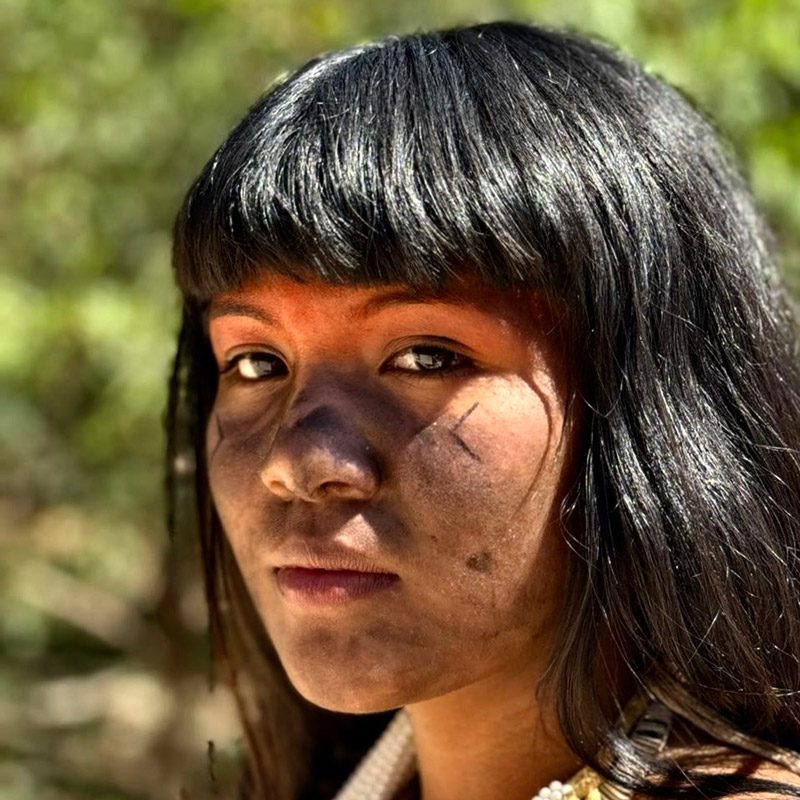
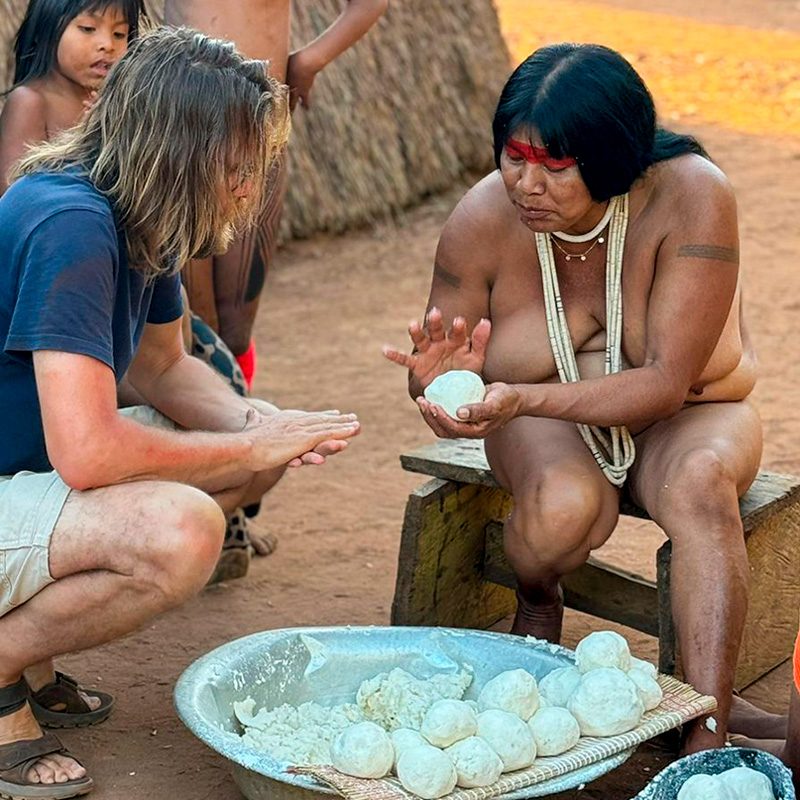
Nature, history and tradition
In addition to living with these three Amazonian tribes, the itinerary will allow us to traverse diverse landscapes, from the ancient Cerrado forests to the great Amazonian rivers. Also, we will visit border cities such as Marabá, Santa Terezinha, and Canarana, spaces that reflect the clash between the Indigenous world and modern agrarian development. This tribal trip to Brazil will not only showcase living cultures, but also the resilience of these peoples in the face of deforestation, the expansion of soybean cultivation, and the pressure of cities.
This expedition is an exceptional opportunity to explore communities that still maintain ancestral rituals and an intimate relationship with nature. Every ceremony, dance, and encounter will be a bridge to a fascinating cultural universe that survives in the heart of the Amazon.
© Photos by Joan Riera and Pongtharin-Tanthasindhu taken during a tribal trip to Brazil.
► Download the itinerary for this tribal trip to Brazil
Click the button below to easily access the download form for this tribal trip to Brazil.
